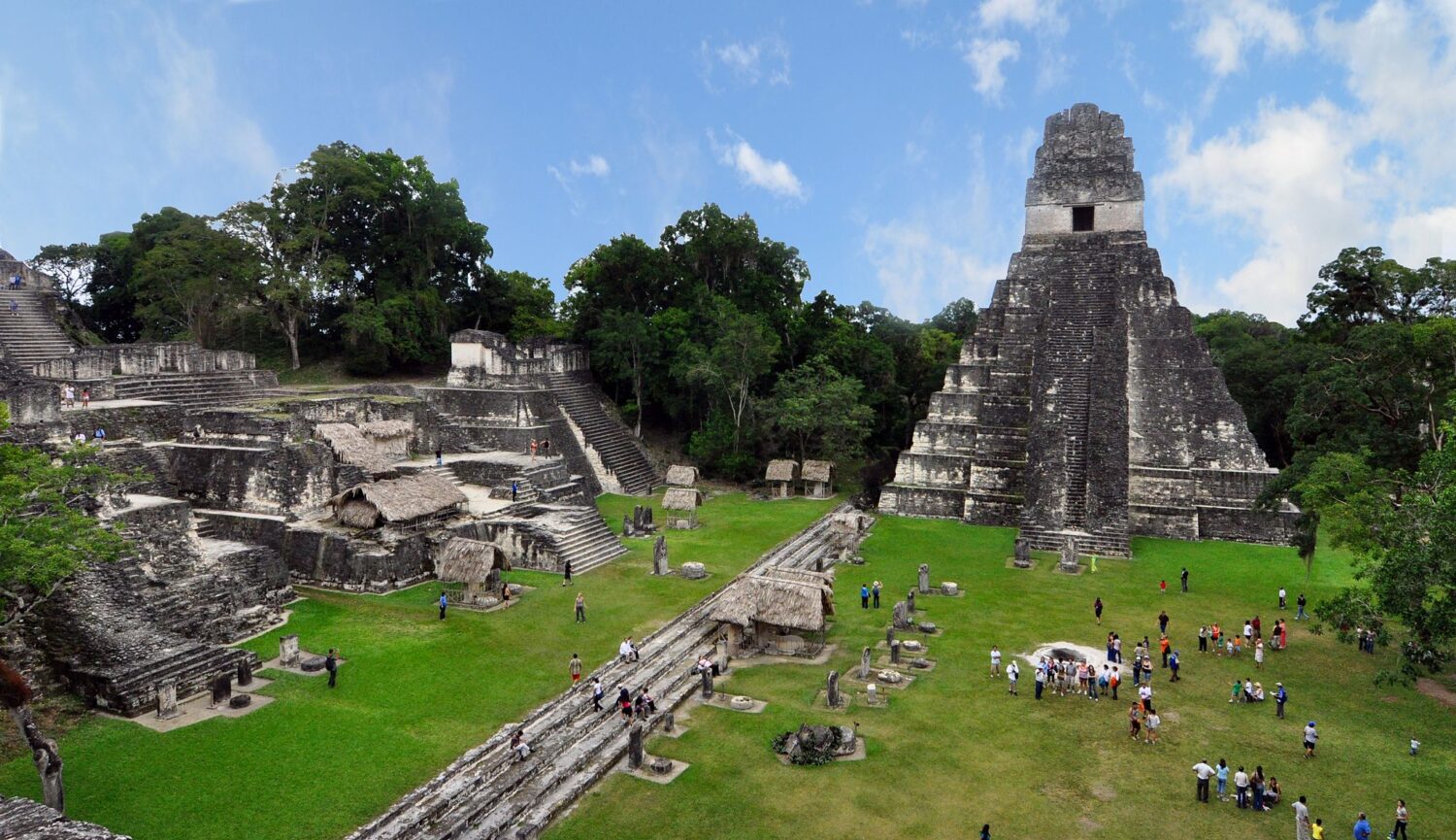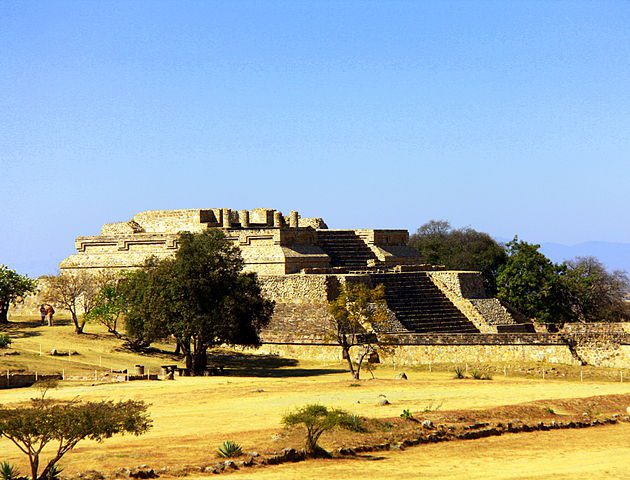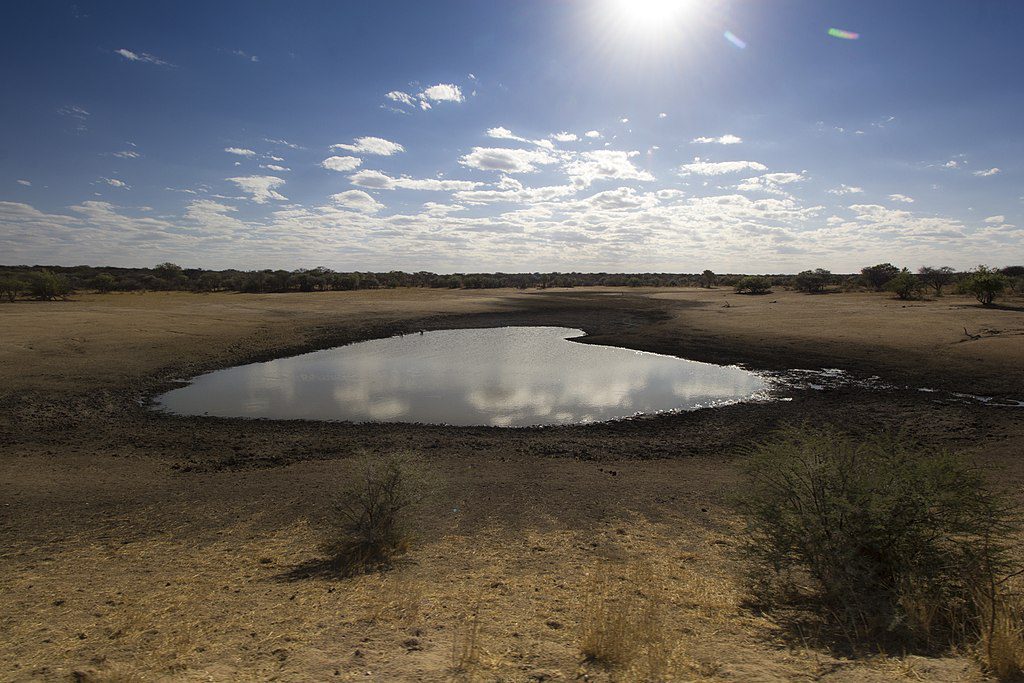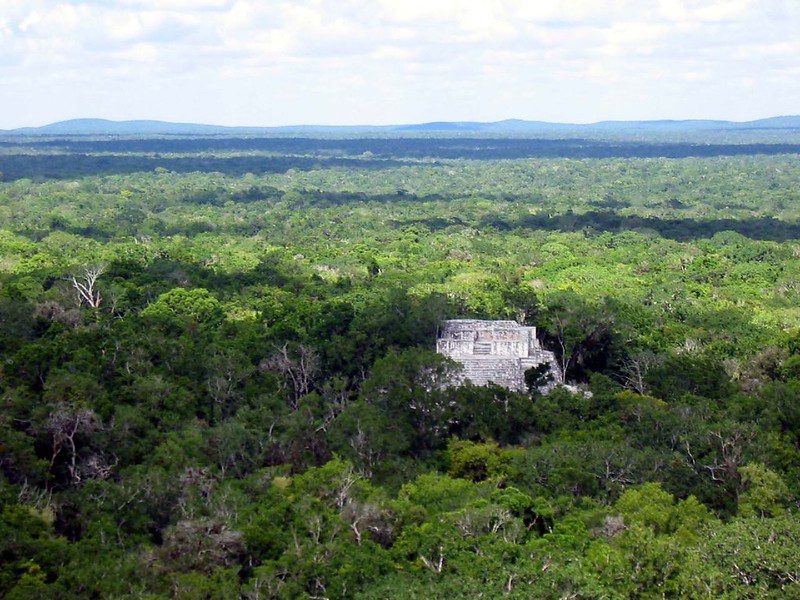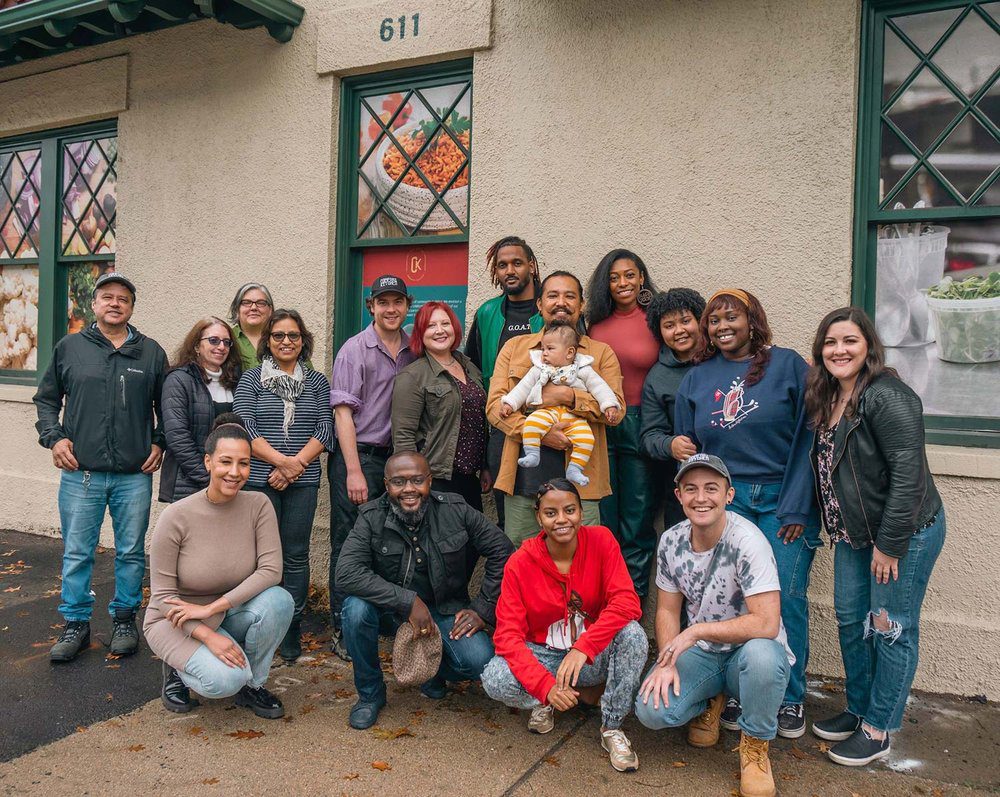Click here to read the article on LA Progressive.
Despite many accomplishments by officials and defenders since 2020, Trump’s return revives election deceptions and distrust as GOP loyalty tests.
By Steven Rosenfeld
In May, David Becker welcomed dozens of elections officials and their allies in legal, policy and academic circles from around the U.S. to a “Summit on American Democracy” by doing what he has done many times since 2020’s presidential election. He recited a crisp list of what should be indisputable facts affirming the fall’s elections were among the best-run in U.S. history.
Across America, elections administrators had learned the lessons from the chaos caused by the COVID-19 pandemic in 2020’s spring’s primaries. They stood up and vastly expanded systems enabling people to safely vote early at polls and from home with mailed-out ballots. They partnered with the private sector and recruited legions of poll workers to replace at-risk seniors. They turned sporting arenas into vote centers.
When the general election ended, a record 160 million voters had cast ballots. That turnout, 20 million more voters than in 2016, followed last-minute litigation by the parties jockeying for advantage. Republicans won 85 percent of pre-election rulings. Yet, as Donald Trump fell behind Joe Biden, Trump Republicans began making exaggerated, unsubstantiated, and false claims of mass illegal voting, sleazy poll workers, unverifiable mail ballots, and more. They filed 60-plus lawsuits in state and federal courts. Not one judge found evidence of foul play.
“The 2020 election stands as one of the great accomplishments of American resilience and know-how,” Becker said, praising the efforts by election workers in 10,000-plus jurisdictions nationwide. “This remains true, regardless of whether one is happy with the results.”
Becker, a polished, driven voting rights attorney, leads the non-profit, non-partisan Center for Election Innovation and Research. He invited election officials and other experts to the security-protected top floors of Washington’s International Spy Museum to discuss the profession’s readiness and concerns about 2024’s presidential elections.
But his summation was not the full story of the 2020’s elections, its aftermath, nor of 2022’s midterms. The profession’s accomplishments did not stop the January 6 insurrection, nor the emergence of a well-funded cottage industry of conspiracists and publicity hounds who put forth mistaken information, fabrications, and propaganda about Trump’s loss, and how votes are cast and counted. Nor did it anticipate the unprecedented targeting of elections officials for abuse, harassment, and threats at work, in public, and in their homes.
While the 2024 political season has barely begun, it is possible to spotlight key emerging trends that will once again test democracy’s guardrails. Notwithstanding the administrators’ recent accomplishments, the presidential cycle is likely to see new stresses on officials, and new mis- and disinformation that preys on those pressures by blurring facts and opinions, or, at its worst, presents persuasive propaganda.
“The 70 percent of Republicans who believe that the [2020] election was stolen do not care about your transparency,” Sarah Longwell told the summit’s closing panel. “They don’t have a series of real reasons you can address.”
Longwell is publisher of The Bulwark, a commentary website run by never-Trump Republicans. Her blunt message to attendees, which included Democrat and Republican secretaries of state, and officials from swing counties in swing states—where she conducts GOP focus groups—was not the encouraging words put forth by Becker. It was that American politics have only become more tribal since 2020; the election profession’s assurances about trusting elections have not changed the minds of many Trump supporters; and 2024 may bring the country closer to a political precipice than 2022’s midterm elections.
In fact, last fall’s losses by many election-denying candidates in competitive top races in presidential battleground states like Arizona, Michigan, Nevada, and Pennsylvania was probably a temporary reprieve, she told the audience. That assessment drew nods of agreement from others on her panel, including two of the country’s most seasoned election lawyers for each major party, Republican Ben Ginsberg, and Democratic Bob Bauer.
Last November, pundits and election defenders were too eager to declare that American democracy was the midterm’s real winner, Longwell said. First, Trump was not on the ballot, she explained. More importantly, Trump has remade the Republican Party by attracting infrequent or new voters who now comprise the majority of its base and believe that Joe Biden was not legitimately elected. They want to participate in Trump’s circus, she said, and embrace its grievances, misinformed patriotism, provocations, deceptions, and authoritarian bend.
“Donald Trump may well be the nominee in this upcoming election,” Longwell warned. “He’s going to talk about elections being stolen. And, as a tribal proposition, as a connection to Trump, people will reiterate that, even though [they say,] ‘I’m a little bit bored with that storyline,’ or ‘a little bit past it.’ It’s how you say, ‘I’m on this team.’”
Longwell was speaking before Trump’s federal indictment on charges he put national security secrets at risk and obstructed investigators, his subsequent vow to keep campaigning, and menacing words from those sharing the stage with Trump at recent GOP conventions and supporting him from GOP leadership circles in Washington and state capitals.
II.
Are the guardrails of American democracy ready for 2024?
When asked, elections officials almost always say that they will do their best—and most mean it. Their profession, where a majority of officials are women, has an ethic of being impartial referees who want to avoid the spotlight. Yet many officials will face an uphill climb for reasons that are beyond their control and little-known outside their circles.
Since 2020, Trump’s agitators have accelerated a wave of experienced officials leaving this civil service profession. The turnover rate is now twice the national average, according to Reed College’s Election and Voting Information Center. As discussed in a June 8 webinar, a fifth of the officials administering 2024’s elections will be new to a job where, as Reed’s Paul Gronke and Paul Munson explained, one learns by doing over several cycles.
Presidential elections have the highest turnout, which, in turn, puts the most stresses on workers, their procedures, and the voting machinery. Mistakes always occur in elections. Most are caught and corrected. But in the Trump era, obscure errors have been twisted into attacks on unpopular outcomes, the process, and officials administering elections.
Another factor may heighten this dynamic in 2024. Officials plan for an election’s logistics by using statistics from the most recent comparable election. That planning includes picking voting sites, assigning poll workers, deploying the computers used, deciding how many ballots to print, etc. These variables, if misappraised, can lead to all kinds of delays and consternation for voters.
The baseline for 2024 is not as reliable as one might hope because 2020’s election was during a pandemic where emergency measures were implemented. For example, in the general election, 46 percent of voters nationally cast mailed-out ballots. That rate was about twice the volume of 2018. In 2022, a third of voters cast mail ballots. (That decline was due, in part, to red states reeling in the option.) These fluctuations underscore the difficulties with planning for 2024.
These nuts and bolts—high turnover and planning challenges—will lead to some errors with setting up or running elections. In 2020 and 2022, a handful of administrative mistakes occurred and fueled some of the most widely disseminated misleading and false claims. It did not matter that the administrative mistakes were very rare, corrected, and many occurred in counties won by Trump. The snafus became starting lines for narratives and conspiracies where what was being described and broadcast nationally was not how elections work.
- In 2020 in Antrim County, Michigan, for example, officials did not check if the candidates on their paper ballots matched the configurations on their tabulators—they did not. That led some Trump votes to be tallied for Biden, which, in turn, was portrayed as an inside job stealing votes and the tip of a nefarious national iceberg.
- In 2020 in Mesa County, Colorado, a back-office manager did not know how to use software that examined screenshots of sloppily marked ballots to determine the voter’s intent. Her confusion initially caused thousands of ballots to be counted twice, which morphed into a sweeping attack on using computers in elections.
- In 2022’s midterms in Maricopa County, Arizona, officials did not notice that some ballots were too poorly printed to be read by precinct scanners. That error became a narrative that county officials wanted to sabotage Trump-aligned candidates in Election Day voting.
In each of these examples, Trump’s allies mischaracterized errors as election theft plots. In most instances, officials explained what went wrong and was fixed in their local press. But nationwide social media platforms used by Trump supporters, right-wing infotainment, and pro-Trump TV networks spent days, then weeks, and then months, telling other stories that misrepresented the snafus. These same forums downplayed the January 6 insurrection and derided the House January 6 Committee hearings and report.
The jingoistic drumbeat was so persistent and persuasive that many election deniers won 2022’s Republican Party primaries for governor, secretary of state, and attorney general. Though most of these candidates lost in the fall’s general election, some have since become state Republican Party officers or are running for U.S. Senate.
The mindset and ingredients that run through this political dysfunction are not new. In 1971, Hannah Arendt, a refugee of Nazi Germany who was one of last century’s foremost political philosophers, wrote an essay, “Lying in Politics,” that described the way authoritarians have always had to subvert facts to sway public opinions. That template—mixing “deception, self-deception, image-making, ideologizing and defactualization”—is rampant among election deniers and shows no sign of abating.
If anything, it may get worse. Trump’s dominance of the 2024 GOP field intersects with the emergence of a powerful communications tool—language-generating artificial intelligence.
AI’s rapid embrace since GPT-3’s release in late 2022 will supercharge the production, customization, and targeted distribution of deceptive political ads and persuasive propaganda, according to Alex Stamos, director of Stanford University’s Internet Observatory and Facebook’s former security chief. In April, he told a webinar about new research that found it was hard for 8,000 people to tell the difference between articles written by credible media and intentionally deceptive propaganda fashioned by AI. (The false AI content was modeled on Russian and Iranian propaganda aimed at Americans in 2020.) Other academic research has found thousands of state legislators believing AI-written letters were from people, and state regulators believing AI-generated public comments for new state policies also were real.
“The marginal cost has gone effectively to zero for content creation. That was not true before,” Stamos said, referring to AI’s use by partisans and propagandists. “As bad as everything is on the Internet [today], I think we are entering an incredible era of things that you can’t trust.”
Already, by mid-June, Trump and his leading contender, Florida Gov. Ron DeSantis, have used AI to forge images in “high-profile” videos attacking each other. But some seasoned observers suspect that AI’s biggest impact will be with candidates that are undefined to voters, in congressional and down-ballot races, unlike the presidential race where Biden and Trump are well-known.
These varied and quickening factors will challenge the guardrails of American democracy. In many respects, these trends are beyond the control of the people who administer elections. High turnover, insufficient time to learn the job’s complexities, poor precedents for planning, and new tools for propagandists are disconcerting enough for any public-serving agency.
At its heart, the challenges that American democracy faces concerns how public confidence or distrust is shaped. The seeds of what lies ahead in 2024 can be seen in the recent past. A closer look also poses the question of what might loosen the grip of disinformation.
III.
Election denialism, or denying that factual, evidence-based outcomes are accurate and legitimate, is not new. It has been a recurring feature in presidential elections since 2000, when the Supreme Court stopped Florida’s presidential recount. That ruling effectively elevated the Republican nominee, George W. Bush, to the presidency.
After 2004’s and 2016’s presidential elections, progressives—not Democrats—questioned the results. They collected affidavits from upset voters, alleged that the vote-counting computers had been sabotaged by operatives, filed election challenge lawsuits, paid for recounts, and sought to preserve and to examine ballots. They discovered hardball campaign tactics, inconsistencies in election administration, but could not present proof in court to alter the results.
That playbook was taken to more impactful extremes by Trump and his supporters during the 2020 campaign and after Election Day, including the failed Electoral College coup in the U.S. Capitol on January 6, 2021. But Trump’s allies did not stop there.
Later that year, an “audit” sanctioned by pro-Trump state senators in Arizona became a months-long propaganda campaign to instill doubts and conspiratorial narratives. The “audit” was led by self-appointed “experts” who had no experience evaluating ballots and vote-count systems before 2020. Even though it eventually declared that Biden had won (after struggling to accurately recount ballots and votes), its highly publicized suspicions and cynicism helped cement the wide view among today’s Republican base that Trump was robbed of a second term.
It did not matter to Trump’s brigades that officials refuted all of their claims. Or that independent analysts who know how elections work, including Republicans in Arizona and other states, looked at voting patterns and found that tens of thousands of voters—a much larger figure than Biden’s margin—had voted for most of the Republican candidates but not for Trump. Georgia Republican Secretary of State Brad Raffensperger has repeatedly noted that 24,000 Georgians did not vote for president in 2020.
One does not have to guess what Trump cultists were thinking then or now. After the insurrection, the leaders of Trump’s ‘Stop the Steal’ movement turned their attention from a handful of rural counties in Michigan, Georgia, and Pennsylvania to Arizona. There, as seen in tens of thousands of text messages that were obtained after litigation by American Oversight, an accountability focused non-profit, the stage managers of the soon-to-start Arizona “audit” were obsessed with Trump’s loss and followed Arendt’s delusion and deception template.
They saw themselves as super-patriots.
“This needs widest dissemination—the American people need to know that we have been under a coordinated attack every bit as dangerous as Pearl Harbor or 9/11,” Phil Waldron, the ex-Army colonel with an information warfare background texted in February 2021, referring to an already debunked claim on a right-wing infotainment website that foreign governments had hacked voting machines in key states. “Nevada Sec State sent the voter roles [sic] to Pakistan—I have the email.”
They saw themselves on a God-given mission.
“Hey General Flynn, I’d like to get at least two people praying every hour during the entire audit (~3 weeks, 24×7); and I was thinking of getting my church to fast and pray for 3 days before it all starts and possibly having the invitation be out wider than that,” texted Cyber Ninja CEO Doug Logan to Michael Flynn, Trump’s ex-national security advisor turned Christian nationalist. “Any chance is that something you’d be interesting in leading the charge on getting Patriots out there to be involved?”
They believed political fantasies and sought revenge.
“Apparently [Democratic Party attorney] Marc Elias has hired 70 attorneys to go after the audit,” texted Christina Bobb, then the One America News anchor covering the Arizona audit on that pro-Trump TV network who later joined Trump’s post-White House staff, to Logan.
“This is going to be interesting,” Logan wrote back.
“It’s gonna be fun. So freaking fun. We’re going to take them ALL down,” Bobb replied. “I don’t know if you know, but I’m a lawyer. I litigated for a while. I’m so ready for this.”
Nearly two years later in mid-2023, the vitriol and gleeful menace has not changed—even if many election-denying candidates lost in 2022’s midterms. On June 3, Mike Lindell, the bedding supply CEO who spent millions to put conspiracists and their false claims before right-facing media and voters, “celebrated” a “victory.” Bill Gates, a Republican, lawyer, and Maricopa County supervisor and election defender, announced that would not seek re-election.
“Our legal team did an incredible job representing [failed gubernatorial candidate] Kari Lake and exposing the criminality of Maricopa County elections, with Bill Gates at the helm,” Lindell said in a falsity-filled email blast. “Bill Gates and his office deliberately violated Arizona law.”
Factually, it was Lake’s lawyers who have been sanctioned for making false stolen election claims in court. Moreover, Lindell is smearing a man who opted not to seek re-election after he and his family received death threats, were forced to move from his home and live under police protection, and told The Washington Post, in astoundingly candid detail, how severely he was traumatized for defending his county’s 2020’s and 2022’s elections.
Gates was at the democracy summit days after the Post’s profile appeared. He was applauded as an election defender and trauma survivor, which was as grim as it was heroic.
“It’s a little embarrassing for me to be sitting up here in front of this group, telling this story, because I think this is the story of many people here and many people across the country,” Gates said. “My colleagues and I were one vote of the [Arizona] Senate away from literally being jailed… All these people that I had worked with, other Republicans for years on local issues, statewide issues, they turned their back on me and my colleagues.”
It is not just the political fringes that are still pushing election-denial propaganda. A few days after Trump was indicted for mishandling secret documents that may contain war plans, Lake, now running for U.S. Senate in Arizona, said that Trump’s defenders may have to use their guns—to defend their vision of America.
The democracy summit ended with Longwell reminding the audience that 30 percent of self-described Republicans, and many independents who were inclined to vote for Republicans, were not swept up in the Trump fervor or election denialism. Her priority was engaging with these swing voters to try to restore fact-based norms among conservatives.
“Don’t treat them like deplorables,” Longwell urged.
But on June 9, just days after Trump was indicted by the Department of Justice, Longwell was very flustered that most Republicans in Congress and seeking the 2024 presidential nomination were defending Trump or equivocating—not speaking truthfully or clearly to GOP voters about the federal charges that were instigated by Trump’s refusal to return the documents.
“It’s how you never break the cycle” of lying and politics, she said on her podcast. “You always move in the self-radicalizing direction. You never move in the de-escalating, de-radicalizing direction, because… there’s a collective action problem. Not enough people are willing to say the truth. They’re always in some gruff minority that’s slowly being excised from the party.”
IV.
What can be done to strengthen American democracy before 2024?
The answers differ with the issues and the audience—officials, voters, partisans, and the election jurisdiction.
Most likely, there will not be another attempt to hijack federal ratification of Electoral College votes because Congress reformed the Electoral Count Act in response to the attempted coup on January 6, 2021. Congressional ratification will be a ministerial and ceremonial event affirming each state’s vote—and little more.
At state and local levels, election officials need to have resources to keep modernizing and becoming familiar with new technology, voting options, laws, and procedures. In blue- and red-run states, legislatures generally have gone in opposite directions since 2020, according to the Brennan Center for Justice, with blue states expanding options and red states curtailing them.
This divergence can be seen in several ways. Many blue states have enshrined mail-based voting that was expanded in response to 2020’s pandemic, while red states have reeled in that option. Many red states have also banned local election offices from using funds from foundations to modernize their infrastructure, which was a factor in how many jurisdictions stood up systems to accommodate voters in 2020. Some red states have even instituted or increased criminal penalties for elections officials and workers, which is part of a trend of legislatures preempting local government decision-making in blue epicenters.
Under any of these policies, officials and voters will have to adapt. The sooner any changes are put into place for voters and officials, the lesser the likelihood of problems arising for all involved, the experience of recent elections has shown.
Battleground states also are likely to be targets for last-minute litigation over some voting and counting rules as the parties vie for advantage. That pattern shows no sign of abating according to seasoned election lawyers at the democracy summit like Bauer and Ginsberg.
Other unconstructive factors likely will remain. For years, both major parties have exaggerated voting-centered fears to motivate their base for fundraising, events, and turnout. Republicans keep demonizing their opponents by reciting voter fraud narratives. Democrats likewise keep hyping voter suppression threats.
“There is now a fraud-suppression industrial complex,” Ginsberg told the democracy summit. “Republicans see fraud everywhere. Democrats see suppression. I don’t want to make a moral equivalency about that because I think my Republican Party has been far worse about it… [But] that does not improve confidence in elections.”
These narratives are corrosive because they misrepresent the reality of who is voting and how elections work.
Factually, with few exceptions across America, it has never been easier to vote. That baseline will remain true in 2024. In most states, there have never been more options to get a ballot into one’s hands and to cast a ballot that will count. There has never been more immediate help for motivated voters if problems arise—via text, email, phone—as people chose to vote early, or from home, or on Election Day. Nationally, turnout keeps increasing, affirming this trend.
Similarly, on the vote-counting side, there is more data on the computer systems in elections to prove that the voters who cast ballots are qualified, that their ballots are legitimate, and that the votes on their ballots—which now are mostly paper—are being accurately counted.
On the other hand, the fine print of the election administration process has been increasingly politicized and propagandized. In this regard, it is important to distinguish election administrators who are trying to be fair referees from other elected officials with overt partisan agendas, especially state legislators, constitutional officers—and county commissioners.
In almost all of 2024’s likely presidential battleground states, none of the senior officials who will administer elections are election deniers. They all embrace more convenient and predictable voting options. This includes top officials in Arizona, Georgia, Michigan, Nevada, Pennsylvania, and Wisconsin. Indeed, many of those officials weathered 2020’s attacks by election deniers and prevailed in court.
But, as one looks ahead, the 2024 election’s landscape has been overshadowed by an ex-president who has made attacking elections a pillar of his comeback and by challengers like DeSantis who has also trafficked in election deceptions. Not in many decades has a major party’s base, elected establishment, and presidential contenders embraced such high-profile election falsehoods as today’s GOP.
This deception-laced backdrop is why the challenge of countering mis- and disinformation, which involves changing minds, is the biggest hurdle facing American democracy.
V.
While the intensity of many of 2024’s concerns hinges on whether Trump is the GOP’s nominee, the challenge of restoring the public’s trust remains.
With few exceptions, the nation’s elections officials are not poised to adopt new public education and persuasion strategies for 2024’s election, including increased transparency surrounding their operations.
Since Trump’s 2020 loss, the most common response to attacks by officials has been to reply with communications that boil down to saying, “Trust us. We’re your neighbors.” Or to point to technical tests of voting systems or statistical audits to allay concerns about accuracy. Or to invite critics to become poll workers to see how things work. Almost every official at the democracy summit said that they planned to stick with this approach as they looked ahead to 2024.
There is some basis for that response. Officials take pride in their accomplishments in 2020 and 2022, even if that work has not been widely praised. Elections scholars repeatedly have found that voters tend to trust local elections more than elections across their state or in other states—regions they are unfamiliar with. But doubters’ views often harden when they hear about purported threats in locales dominated by the opposing party, or if they cannot judge the accuracy of the controversial results for themselves. Thus, a vacuum emerges and invites mis- and disinformation.
As MIT election data scientist Charles Stewart told the democracy summit, “For political scientists, it’s pretty clear why this [atmosphere of distrust] is happening… most people don’t know about election administration.”
Whether greater transparency surrounding key decision points in the process would breed more acceptance of close results is an open question. Just as Longwell said that it was an “untested” proposition whether the minds of more Republicans might change if GOP leaders told the truth about Trump’s federal indictments, it remains untested whether giving more timely and easily understood evidence to skeptics in presidential battleground states would quell their doubts.
Many Trump supporters have clamored for such proof. Since 2020, they have followed “Stop the Steal” leaders and inundated officials with records requests—in swing states and across the country. But the activists have not done much with the data; most likely because it can be large and unwieldy. Also, the records requests have come as other Trump loyalists have harassed some of the same officials and their workers, which, unsurprisingly, has cast a shadow over more transparency.
In short, a transparency gridlock has emerged that likely will carry over into 2024.
In Pennsylvania, the state’s election agency has opposed public access to more election records, such as screenshots of every side of every paper ballot card and the final spreadsheet listing all of the votes on every ballot.
In Arizona, a bill to make more key records public—to attest to the legality of each voter, authenticity of every ballot, and accuracy of the vote count—was vetoed by Democratic Gov. Katie Hobbs, who previously was secretary of state. Liberal advocates, like Common Cause, opposed it, contending that making the voter information more accessible to the public could be used to threaten voters. (Political parties and consultants already have this voter information.)
In mid-June, an attempt was made to revive the Arizona bill. Its author, Ken Bennett, a Republican former secretary of state and now a state senator, put forth a narrower proposal that removed the voter records. At a forum by AUDIT US, a non-profit, non-partisan transparency group, Bennett explained that by comparing the starting line of the tabulation process—screenshots of every ballot, to the finish line—a spreadsheet listing every vote on each ballot, “anyone can verify that the election was done correctly.”
But Bennett’s effort, which exemplified Longwell’s plea to not treat Republicans as “deplorables,” fell victim to the very propaganda that it sought to stem.
Trump activists peeled away Republicans by distorting another aspect of the bill and claiming that unvetted voters would get ballots—reviving the voter fraud myth. Liberals peeled away Democrats by saying that right-wing vigilantes would use ballot images to find and harass voters—a voter suppression scenario that has not been seen in Florida and Maryland, where ballot images have been used to verify results and to convince the losing side.
“It’s just completely made-up nonsense,” said John Brakey, AUDIT US’ executive director, of the contentions from the left and right that killed the bill.
Thus, a modest effort to lessen the grip of disinformation in a battleground state again failed. The episode underscores the issues, dynamics, and dangers facing the guardians and guardrails of American democracy before the 2024 election, where distortions, deceptions, and propaganda pose the biggest challenges—far more than what officials do to get ballots into voters’ hands and to count them accurately.
Click here to read the article on LA Progressive.
